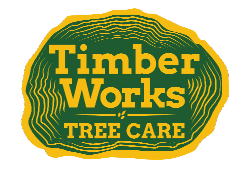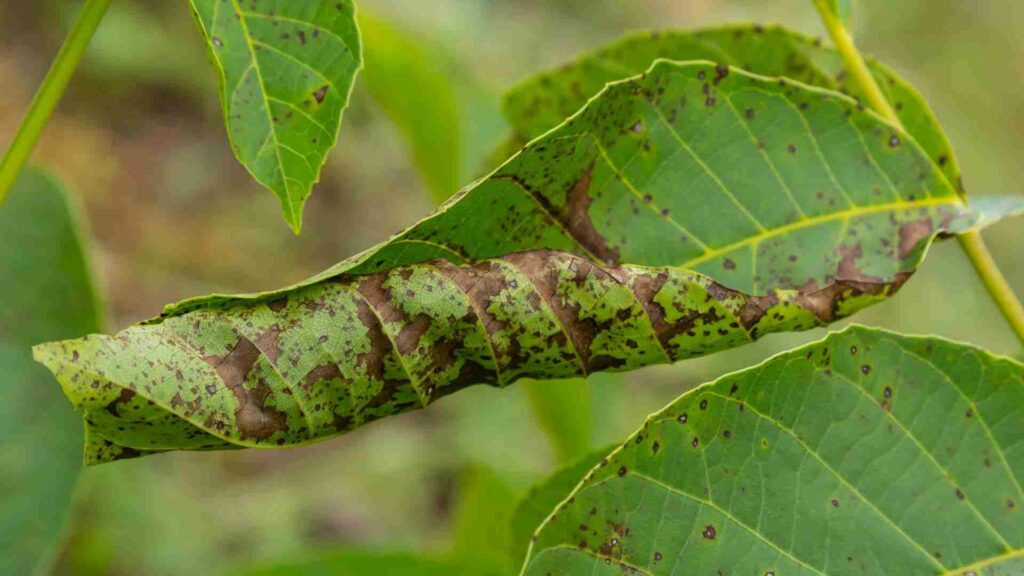Of all the tree diseases Virginia property owners should watch out for, anthracnose ranks high. This fungal illness often causes browning, defoliation, dieback, weakness, and even death. Thus, you should check your shade trees regularly for anthracnose. Knowledge about anthracnose and professional tree maintenance services will help keep your trees and property healthy.
Timber Works Tree Care offers the knowledge and services necessary to fight anthracnose and other tree diseases common in Linden, VA. We provide routine tree trimming, forestry mulching, tree removal, and more to protect your property from devastating infections and infestations. To get a free estimate, contact us at (540) 692-9606 or visit our website.
Below, we discuss what anthracnose is as well as how to find and manage it:
What is Anthracnose?
Anthracnose refers to a variety of fungal diseases that grow on shade trees. Although it is often just the appearance of a tree that is affected, the fungus can be deadly to specific species. It may also weaken a tree and make it vulnerable to insect invasions or secondary diseases. Common anthracnose symptoms are leaf and shoot blight, twig dieback, and defoliation.
The fungi survive in fallen leaves or twig cankers over the winter, spreading their spores through wind or rain onto nearby trees in the spring. Cool, moist environments provide the perfect conditions for germination and infection of plant tissue. Lesions form, developing “summer spores” on the infected plant tissue that cause even more leaf lesions.
Where to Look
Anthracnose appears in regions that experience chilly, moist conditions, especially those wherein these conditions persist throughout the summer. Given its wide range of strains, anthracnose is almost everywhere in the contiguous United States. For instance, dogwood anthracnose has affected flowering dogwood trees along the East Coast and in the Pacific Northwest.
Note, however, that different anthracnose strains target distinct tree species. For that reason, a broad array of tree species are affected by various fungal diseases. Some of the most susceptible varieties include:
- Dogwoods (especially flowering dogwoods)
- Walnuts
- Maples
- Ashes
- Oaks (especially white oaks)
- Sycamores
Common Signs
Although anthracnose’s appearance varies between tree species, it often manifests as tan or brown patches on leaves. This tree discoloration and its resulting defoliation often occur in spring, sometimes followed by another leaf growth in late spring or summer.
Anthracnose can also damage buds and new shoots on various tree species, including sycamores, white oaks, and maples. Additionally, branches and twigs may develop cankers, which can cause dieback, twig deformation, and witches’ brooms—multiple shoots growing from one spot.
Management & Prevention
The best way to control anthracnose is to interrupt the overwintering process. Contact a tree service provider for corrective pruning of infected branches and twigs along with disposal of fallen leaves. Well-timed fungicide applications can also help mitigate anthracnose. A certified arborist can inform you on the necessary timing and frequency of application, as it will vary among species, climates, and other determinants.

There are also proactive ways to prevent the appearance of anthracnose in healthy trees. Routine tree trimming and pruning will allow for more light and air penetration through the crown, eliminating the cool, moist conditions anthracnose needs to survive. Also, proper tree care, including regular fertilization, will bolster tree health, combating infection and premature defoliation. Before planting any vulnerable species, consider choosing an anthracnose-resistant variety instead.
Routine Tree Maintenance Services Offered in Linden, VA
If you are dealing with anthracnose or other tree diseases, look to the certified arborists at Timber Works Tree Care. We offer expert tree maintenance services to property owners in the Linden, VA, area. With the help of our tree specialists, you can not only address existing anthracnose but prevent it from appearing in the future. Talk to our knowledgeable arborists today at (540) 692-9606.







